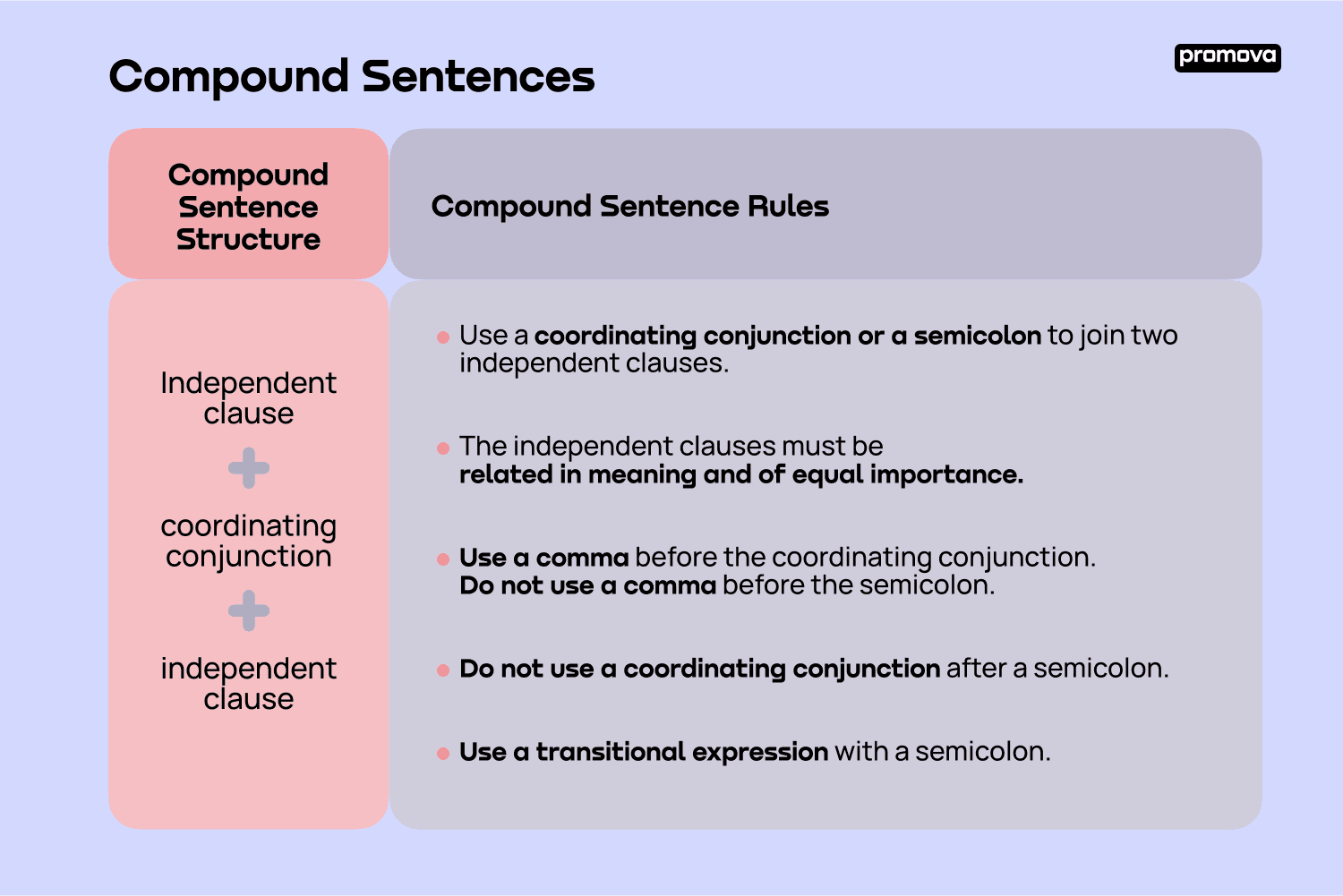Compound Sentences
Contents
One of the most important aspects of English writing is the effective use of compound sentences. In this reference, we will explore the definition, types, structure, examples, rules, and common mistakes of compound sentences in English.
What is a Compound Sentence?
A compound sentence includes two or more independent clauses that can be connected by a coordinating conjunction or a semicolon. An independent clause is simply one that can stand alone as a complete sentence, while a coordinating conjunction is a word which joins two clauses of equal importance. The most common coordinating conjunctions are "and," "but," and "or."
A compound sentence can also be formed by using a semicolon instead of a coordinating conjunction. For example: "I like to read books; my sister prefers to watch movies."
Types of Compound Sentences
There are three ways to make compound sentences: coordinating conjunctions, semicolons, and transitional expressions.
Coordinating Conjunctions: These are the most common. They are formed by joining two independent clauses with a coordinating conjunction. For example: "I like to swim, and my brother likes to play soccer."
Semicolons: These are used to join two independent clauses that are closely related in meaning. For example: "She is an excellent dancer; her sister is a talented singer."
Transitional Expressions: These are words or phrases that connect two independent clauses. For example: "I faced challenges along the way, however, I still managed to finish my project on time."
Compound Sentence Structure

The structure of a compound sentence consists of two or more clauses that are joined by a coordinating conjunction or a semicolon. The clauses must be of equal importance and related in meaning.
Here is an example of a structure:
Independent clause + coordinating conjunction + independent clause.
Example: "I like to read books, but my sister prefers to watch movies."
Compound Sentence Examples
Here are some examples of compound sentences:
- "I like to swim, and my brother likes to play soccer."
- "She is an excellent dancer; her sister is a talented singer."
- "I faced challenges along the way, however, I still managed to finish my project on time."
- "I have a lot of studying to do, so I can't go to the party."
- "He studied hard, but he still failed the exam."
4
Compound Sentence Rules
To form a compound sentence correctly, there are some rules that you need to follow:
- Use a coordinating conjunction or a semicolon to join two independent clauses.
- The independent clauses must be related in meaning and of equal importance.
- Use a comma before the coordinating conjunction.
- Do not use a comma before the semicolon.
- Do not use a coordinating conjunction after a semicolon.
- Use a transitional expression with a semicolon.
Common Mistakes
Here are some common mistakes that people make when using compound sentences:
- Using a comma splice: This is when a comma joins two independent clauses without a coordinating conjunction. Example: "I like to read books, my sister prefers to watch movies."
- Using a run-on sentence: This is when two independent clauses are joined without any punctuation. Example: "I like to swim my brother likes to play soccer."
- Using a coordinating conjunction incorrectly: This is when a coordinating conjunction joins two dependent clauses. Example: "I wanted to go to the park, but it was raining."
Summary
Compound sentences are formed by joining two or more independent clauses with a coordinating conjunction, a semicolon, or a transitional expression. To form a compound sentence correctly, the clauses must be related in meaning and of equal importance. Try creating a few sentences using the different types of compound sentences and see how they improve the clarity and flow of your English speech!



Comments